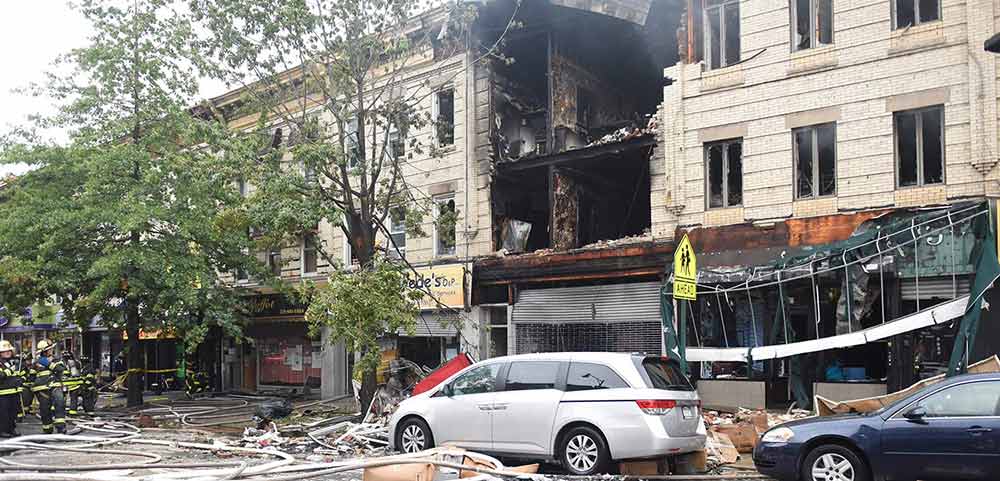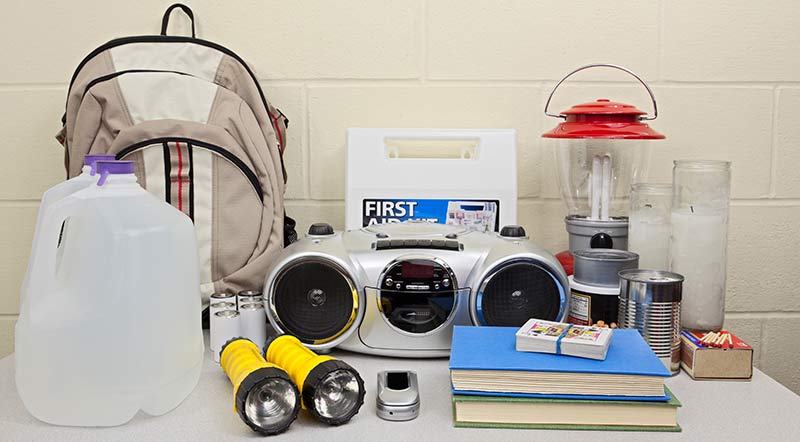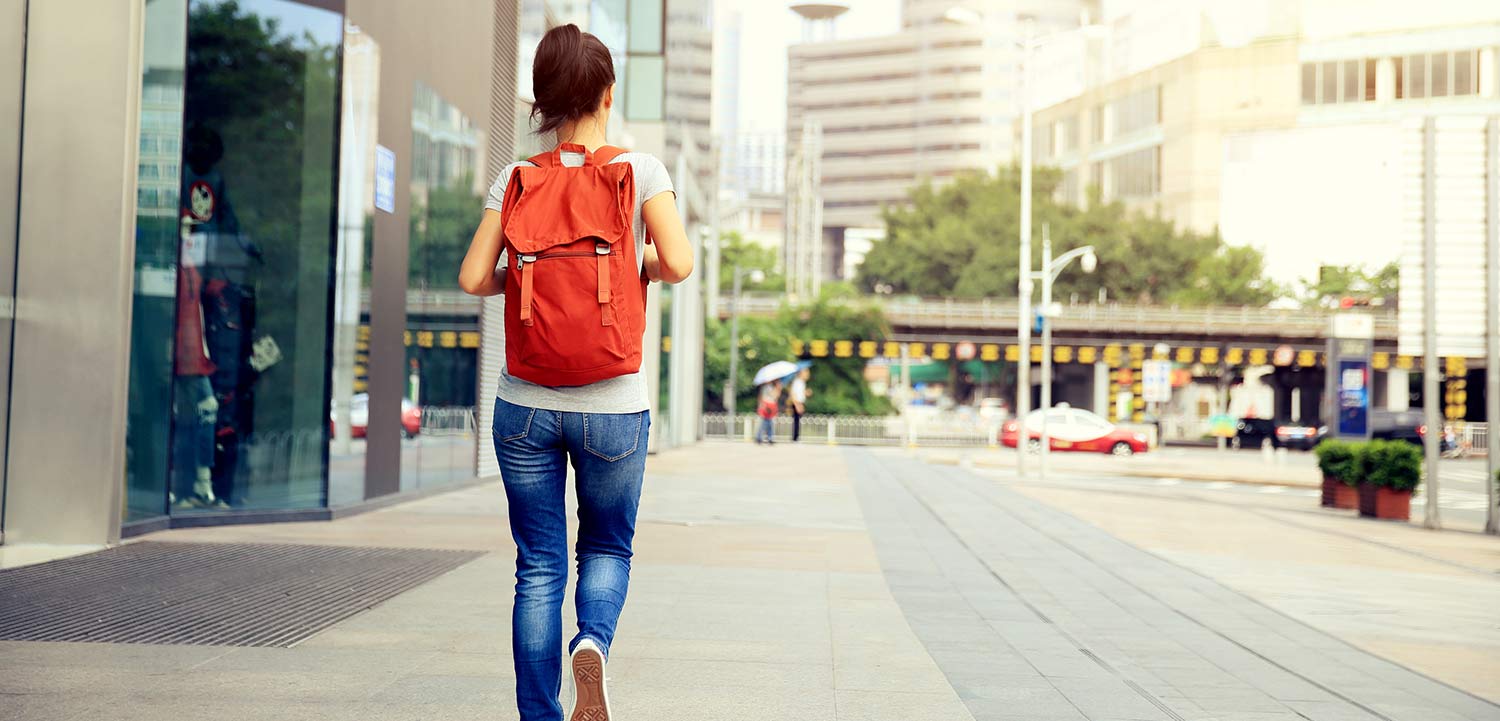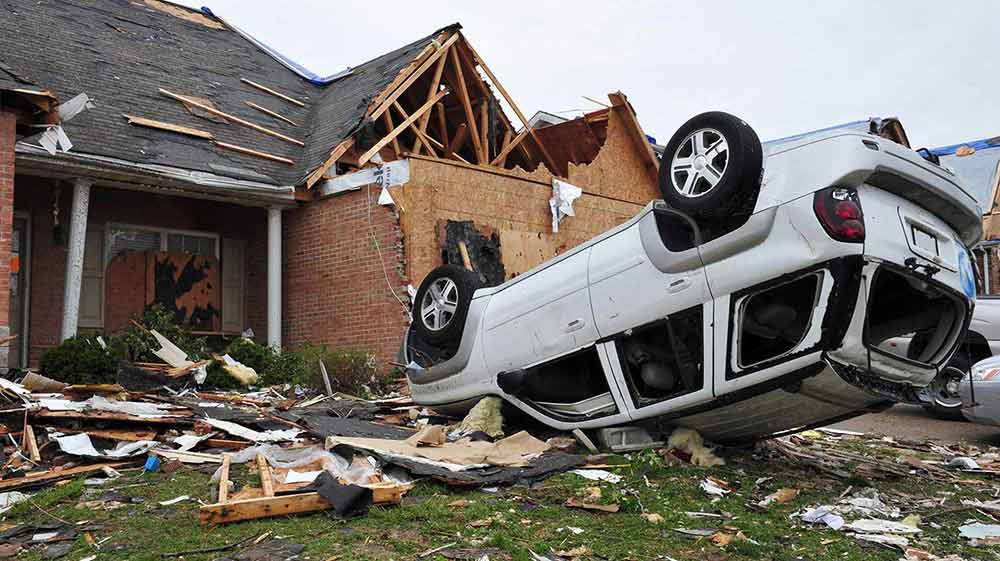
physical preparedness & the go bag
I have done preparedness lectures all over the United States and I find that people in California and Florida are very receptive, mainly because the residents of both of those states have all too often seen the aftermath of disasters. In California, earthquakes, forest fires and mudslides have been part of the fabric of California life. And in Florida, hurricanes have separated people from everything…their homes, their financial data, their friends and families. Other parts of the country haven’t listened or haven't taken the steps to prepare as diligently as Californians or Floridians.
• 91% of New Yorkers feel insufficiently prepared to handle a disaster!
• 76% of New Yorkers lack a disaster supplies kit.
• 77% of New Yorkers have no disaster plan
• Are you one of these statistics?
Here are the steps you can take to prepare yourselves and your family for the possibility of a disaster/an incident/some event that separates you from your normal “life” support system.

Create a Communications Plan
It is important that you establish a communications plan with your family members before a disaster strikes. It is very likely that during a large disaster, you may be able to send a text message while not being able to make a voice call.
When you think of a communication plan, who are you trying to communicate with? Do you all have the same devices?
Cell towers get overwhelmed during disasters and there are only a limited number of “lines” on each tower. Text messages use a different aspect of the cell tower equipment to move data, so you may be able to communicate via text messages when the voice lines are busy.
Establishing a meeting place:
Everyone says “have a meeting place in case something happens,” but you actually need 3 or 4 meeting places. Here are some scenarios to consider when you think about making plans.
If something happens to your home: If there’s a fire in your home or the home next door and you are told to leave your home, where would you and your family meet? Across the street? On the corner? If something is happening at your home, there should be a designated place where everyone meets.

If something happened in your neighborhood and you couldn’t get to the street where your house is located or the immediate neighborhood, where do you meet? You’ll need to designate a location everyone in the family knows.
If you can’t get to your community, where should you meet? Is there another person that lives further away from you or far enough away from you that they should not be affected by the same disaster that you are being affected by? And would everybody in the family know that they need to find a way to meet there?
In addition to designating a meeting place, there is also the question of how do you get there? Are you using bicycles? Are you going to try to drive? Is there a ferry that can cross a river? What’s available to you in each circumstance? How do you get everybody to think clearly? By designating these meeting places and clarifying the modes of transportation you would need to use to get there, you reduce the stress associated with disaster situations and allow your family to have the presence of mind to calmly think clearly.
The Famous Contact Card:
This is the card that you are normally told to “put on your refrigerator.” The last place you want to put the Contact Card is on your refrigerator. Every family member should have the information that is available on the contact card either on them or photographed on their cell phone and/or added to the contact info in their cell phone or tablet. It shouldn't be in just one place; it should be in a number of places that are accessible to every family member.
What information should be on the Contact Card?
• Your local “911” emergency number
• Not all areas use “911”. Know what your local emergency number is.
• The telephone/cell number of the person holding the other copy of the Red File
• Your local police precinct and fire department telephone numbers
• The telephone/cell numbers for each family member
• The telephone/cell numbers for your family physician
• The telephone/cell number of a relative or friend who lives outside of your home area and who is willing to be the central contact point in situations where you cannot reach or find your family members.
Set up your own emergency plan with the family members in your home and with the teachers in your school and your colleagues at work. Most schools will provide an 800-number or another number to call in case of emergency. It is possible that this number is not going to work in an emergency or be overwhelmed. You might try to get the cell phone numbers of the teachers who are responsible for your children by telling them you will not use it other than in an absolute emergency. The teacher should also have your cell phone information and your email information. It may be easier to get out an email or text message than it will to get a voice message out.
A Disaster Supplies Kit
Depending on age, very family member should have his or her own supply kit. Within those ‘go bags’ each family member may have different things.
What to Have in Your Kit
The Red Cross recommends keeping enough food and water in your home so that you and your family can survive for at least 3 days. I would suggest using 7-10 days.

Flashlights: Some flashlights operate solely on batteries. Some have alternate sources of power, such as a “cranking device” that can provides power and recharges the battery.
If you have a standard, old-fashion flashlight that has a switch on it, keep the batteries outside of the flashlight or put the batteries inside the flashlight and tape over the switch so that the flashlight doesn't get accidentally turned on while in the go bag.
A rechargeable radio and extra batteries is a good thing to have. Rechargeable battery operated radios are much smaller and better than they used to be so it is worth “upgrading” from an older unit that you may currently have. Most of them have other uses such as charging cell phones.
Basic necessities such as:
• Toothpaste and toothbrush
• Medications
• Prescriptions for those medications in case you need refills
• Child’s favorite toy
First aid kits do not have to be extravagant. You can buy a basic first aid kit at almost any drug store, or you can buy a waterproof container in which to put your own first aid supplies. Some of the basic items to have in the kit are:
• Various sized band aids
• Bandaging supplies for larger wounds
• Protective gloves
• Anti-bacterial ointment
• A pair of scissors
• Tweezers
Have these essential supplies in an easy to carry bag or container, not a gigantic suitcase. Keep this as trim as you can. Remember that you will probably be carrying it. Include special needs items for any household member: infant formula or items for people with disabilities.
Consider also including copies of essential documents.
• A copy of your drivers license
• Two or three checks from your checkbook
• A small reserve of cash (small denomination bills)
• Duplicates of Credit or Debit Cards.
Where should you place the go bag?
The ‘go bag’ should be placed close to the most logical exit pathway that you would use in an emergency. This may be near the front door of your apartment or home, or the door to your garage. If you use your car often, you should consider keeping a second ‘go bag’ in the trunk of your car. If you spend more time in your office than in your home, keep a ‘go bag’ in that location as well.

Below are lists of what the American Red Cross recommends. You should use this as a guide for what you chose to include.
• 1 Drawstring backpack
• 1 Emergency poncho
• 1 Emergency blanket
• 2 Hand warmers
• 1 Emergency drinking water pouch
• 1 Light stick
• 1 Whistle with neck cord
• 1 N95 breathing mask
• 1 Pair exam-quality vinyl gloves
• 1 Hand sanitizer pack, 0.9g
• 2 Germicidal wipes
Mini first aid kit with:
• 5 Adhesive plastic bandages, 3/4" x 3"
• 3 Adhesive fabric bandages, 3/4" x 3"
• 5 Junior adhesive plastic bandages, 3/8" x 1-1/2"
• 1 Fingertip fabric bandage
• 1 Knuckle fabric bandage
• 2 Antiseptic cleansing wipes (sting free)
• 1 Triple antibiotic ointment packet, 0.5g
• Handled Bag w/ Removable Pouches)
• Battery Powered Flashlight - 7 LED Bulbs
• 2 D Batteries
• Battery Powered AM/FM Radio
• 3 AA Batteries
• Emergency Blanket Reflective, 4.5' x 7'
First Aid Kit
• 5 Adhesive Bandages, 3/4" x 3"
• 1 Fingertip Bandages Fabric
• 1 Knuckle Bandages Fabric
• 2 Triple Antibiotic Packets, 0.9 grams
• 2 Hand Sanitizer, 0.9oz
• 1 Adhesive Bandage, 2" x 4"
• 1 Sterile Abdominal Pad, 5" x 9"
• 1 Nitrile Gloves (pair)
• 1 Rolled Gauze, 3" x 5 yds (wrapped)
• 3 Sterile Gauze Pads, 3" x 3"
• 1 First Aid Tape, 1" x 2.5 yds
• 1 Scissors
• 2 BZK Towelettes Bulk
• 1 First Aid Guide
• Datrex Food Packets Total of 2,400 Cal (5 year shelf life, approved by USCG)
Comfort Sub Kit:
• Toothbrush & Toothpaste
• Hair and Body Shampoo
• Lotion
• Soap
• Deodorant
• 12x12 Wash Cloth
• Comb
• Procedural Breathing Mask
• Rain Poncho (adult sized)
• Datrex Water Pouches Total of 2 Quarts (5 year shelf life, approved by USCG)
• Hard Plastic "Pealess" Whistle
• Contents Label in the Backpack
USEFUL LINKS
DID YOU KNOW?

Cleveland County, OK F5 Tornado
$3 billion in property damage
36 people die
631 people injured
30 number of individual tonadoes touched down during this storm
200+/mph winds